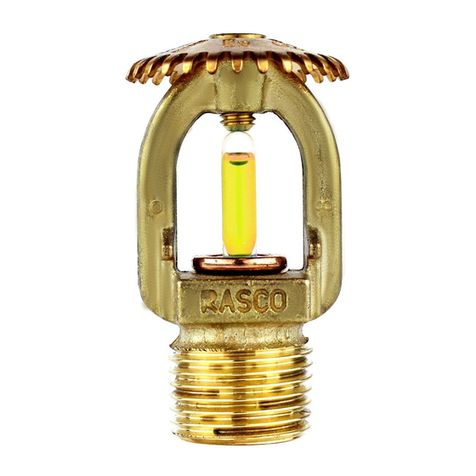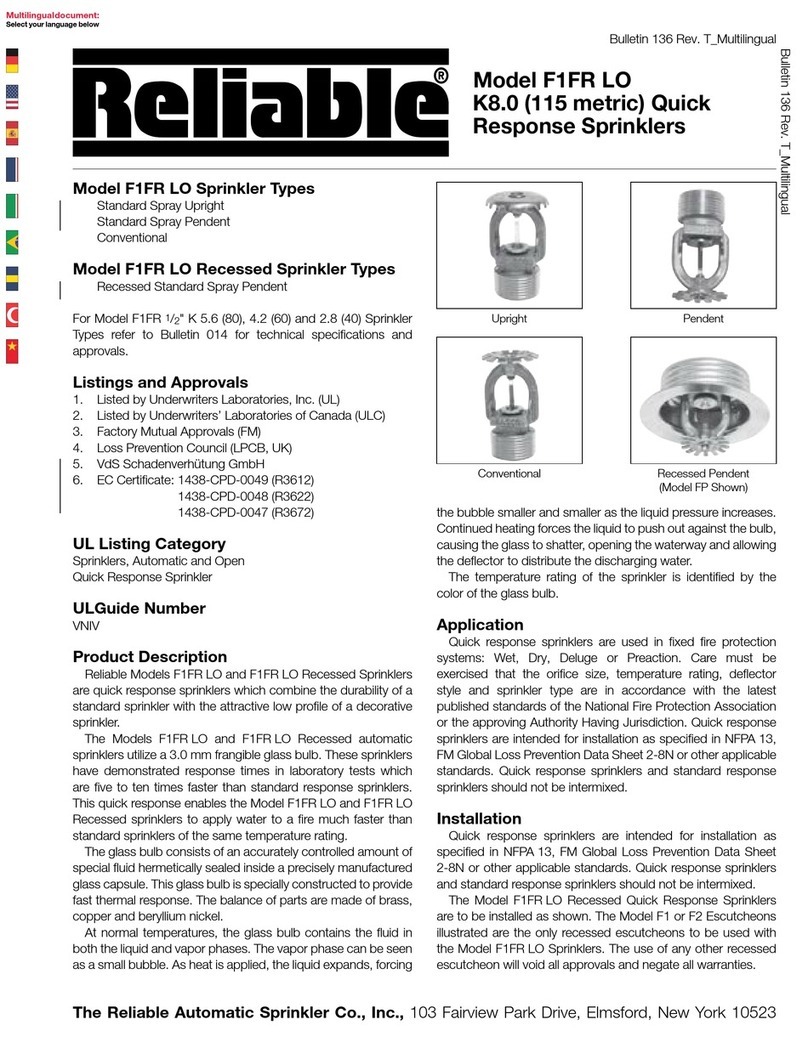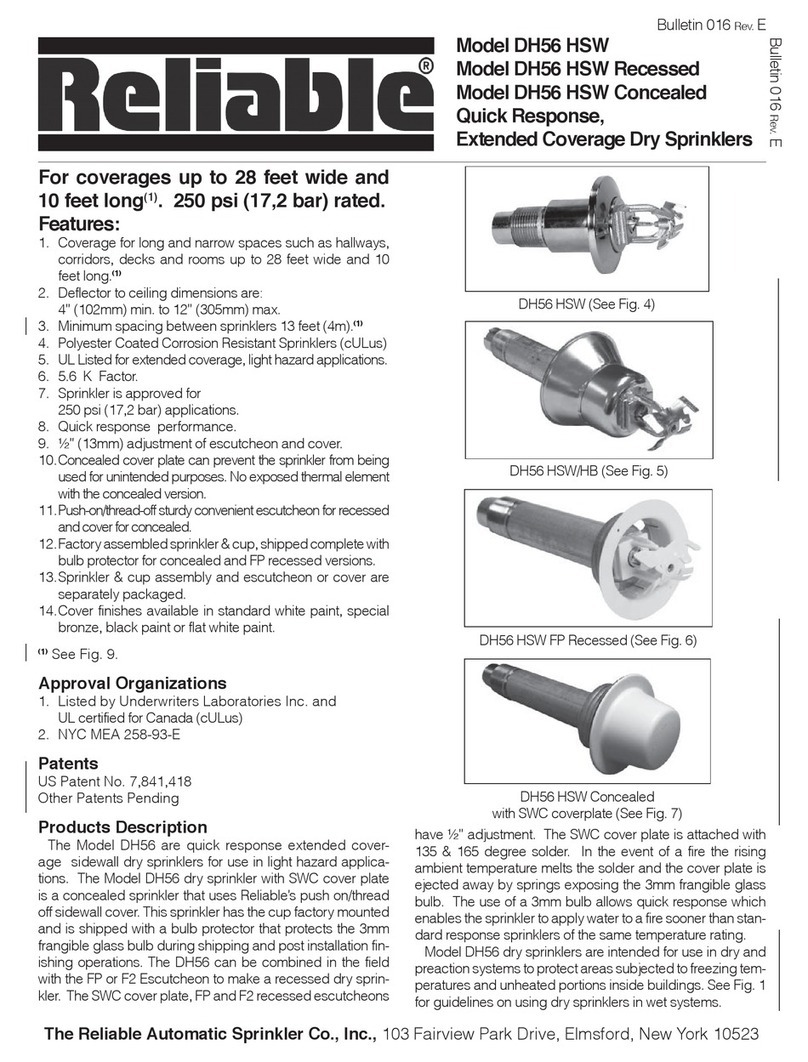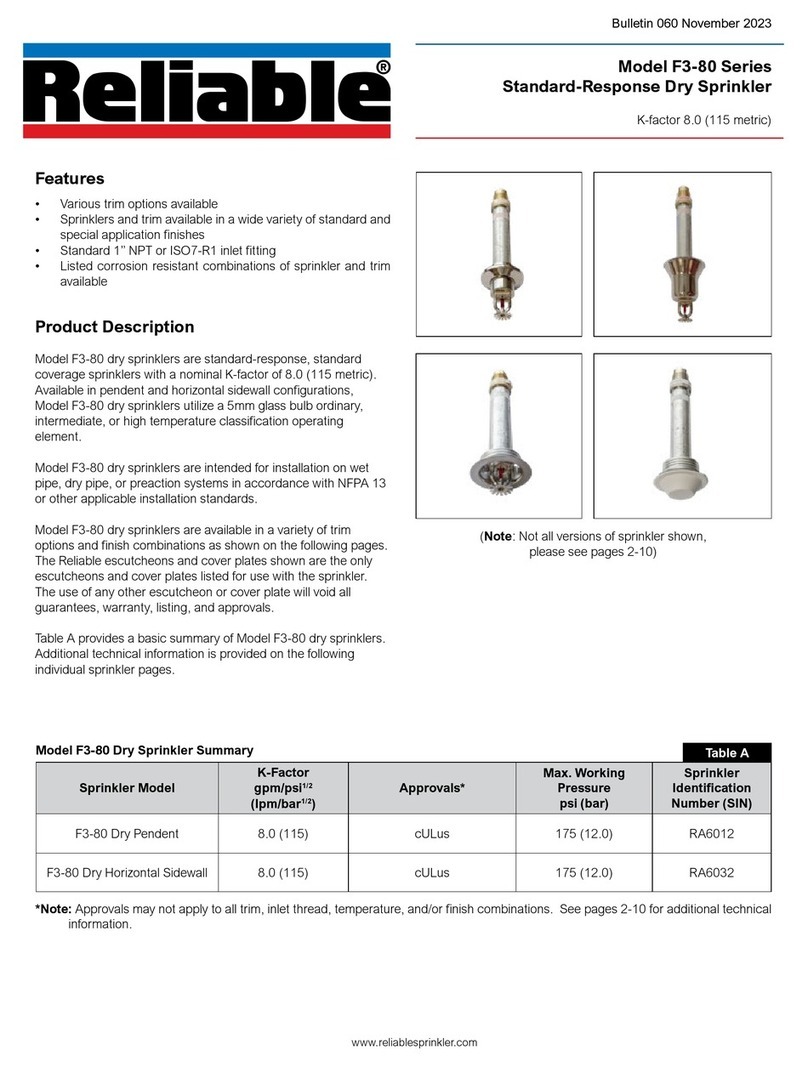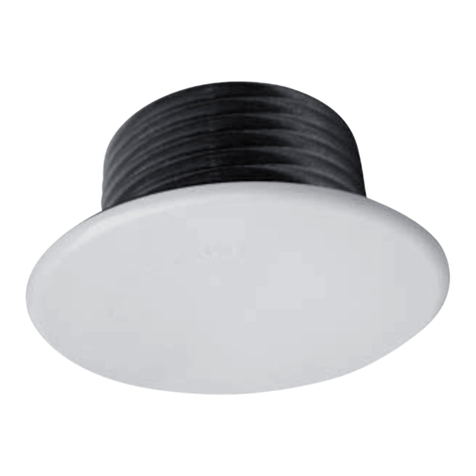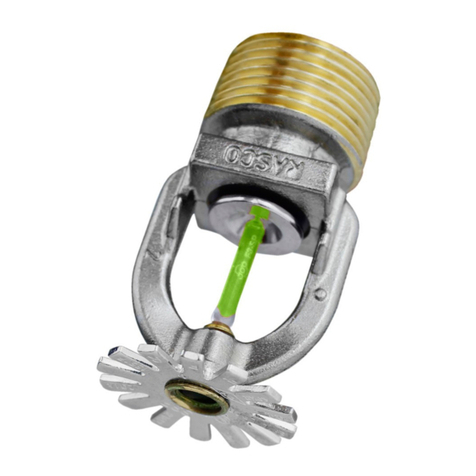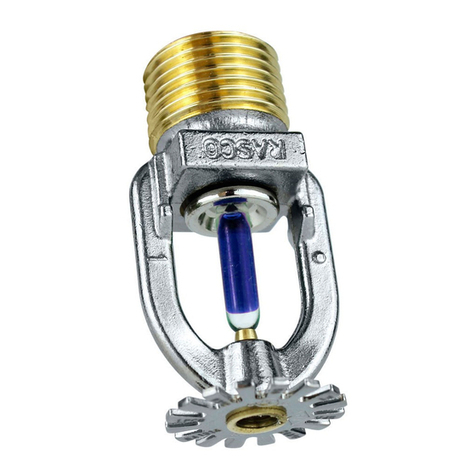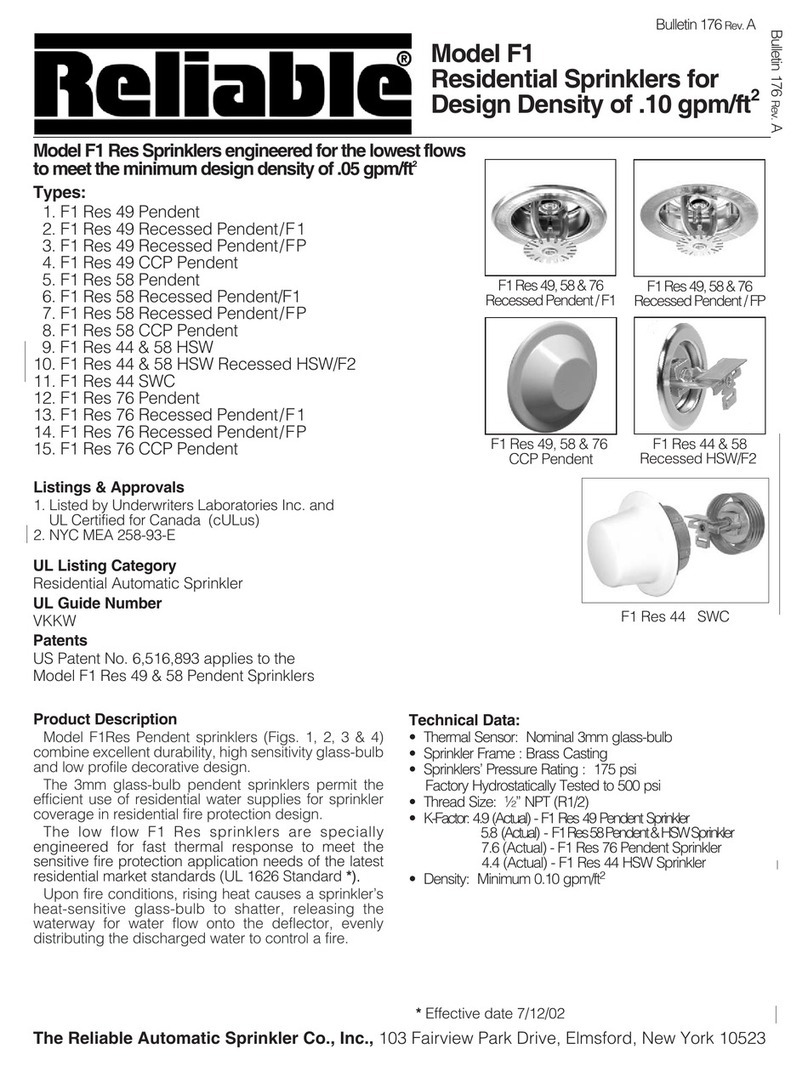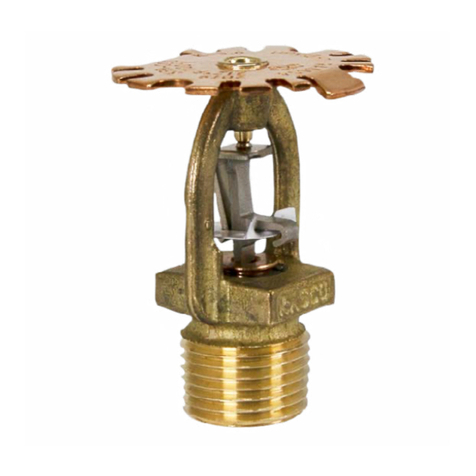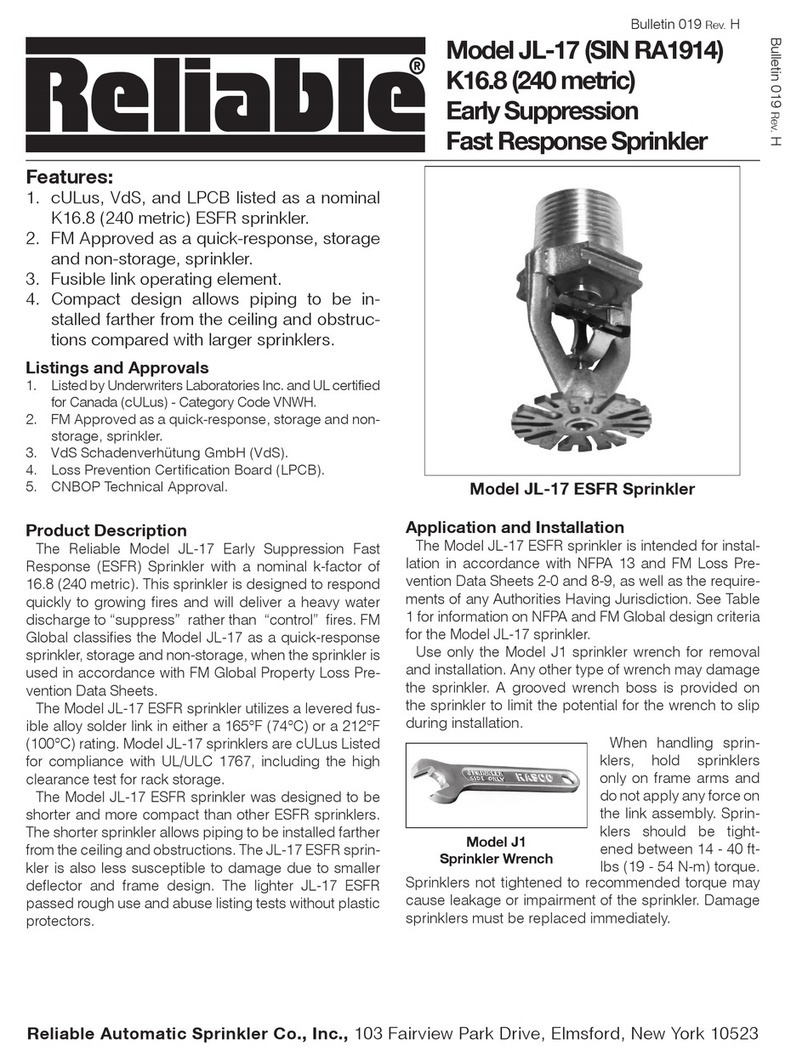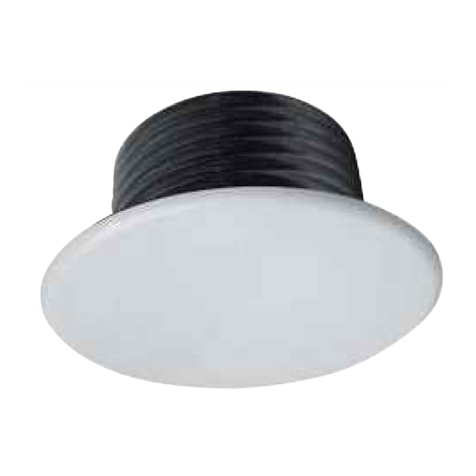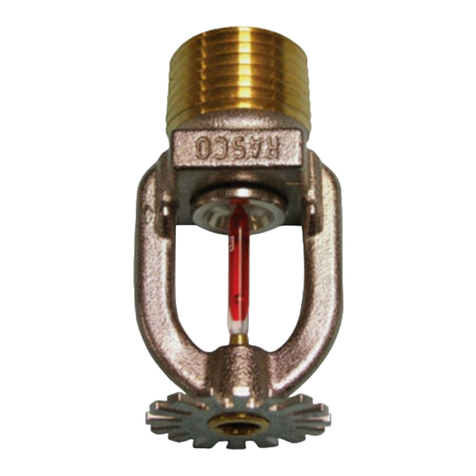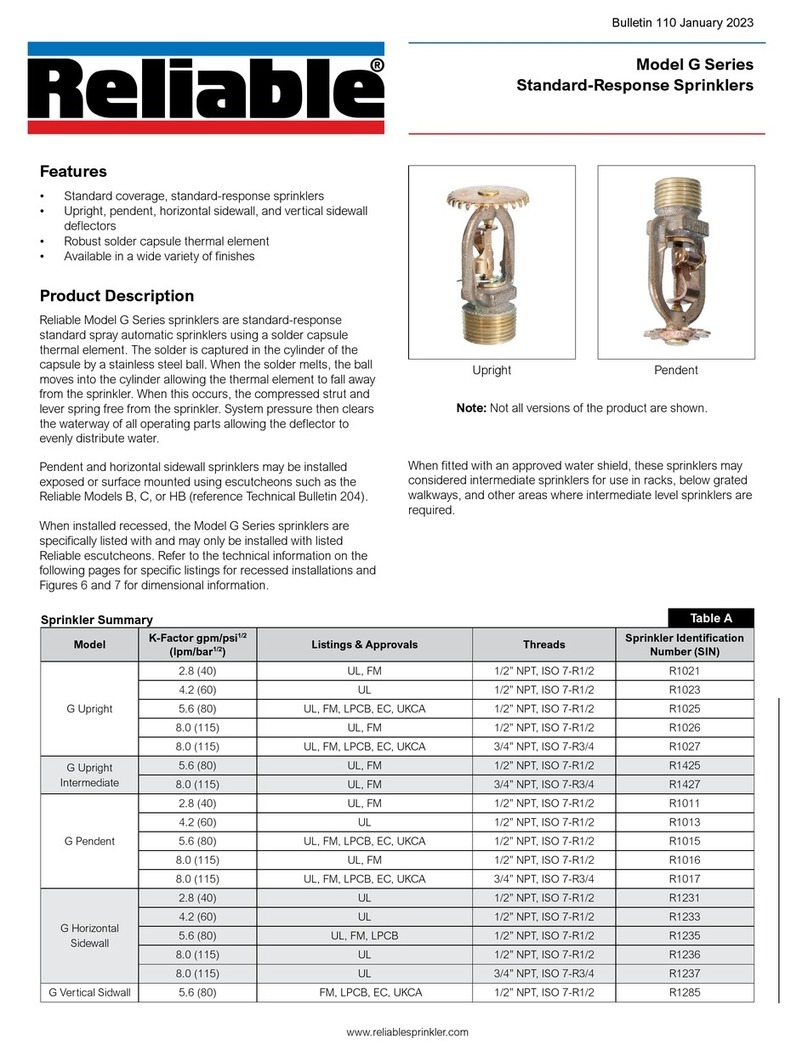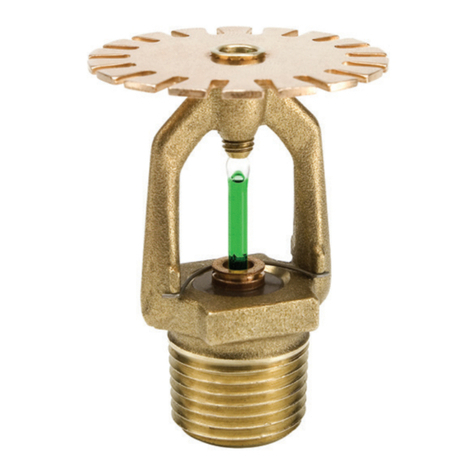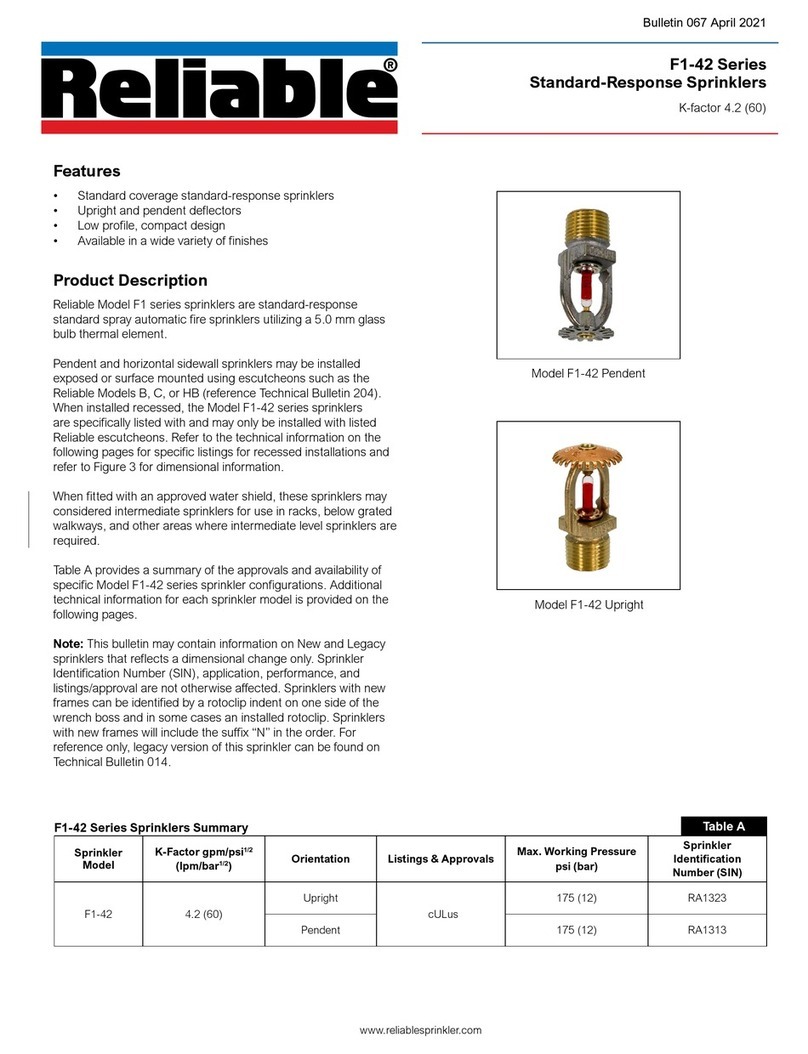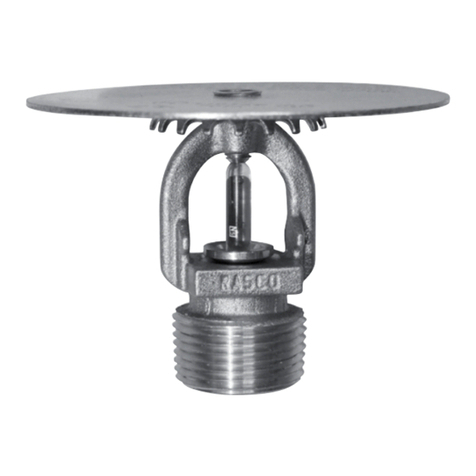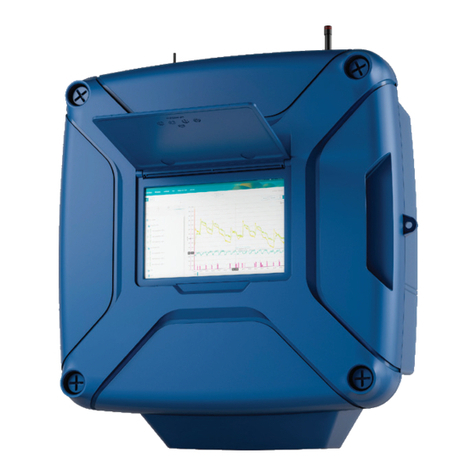
5.
Installation Requirements
The automatic sprinklers, releasing devices, fire detection
devices, manual pull stations, and signaling devices which are
utilized with the Reliable Model DDX 4” (100 mm), 6” (150 mm)
and 8” (200 mm) PrePaKs must be UL and/or ULC Listed or FM
Approved, as applicable.
The steel enclosure and all the interconnecting piping must
be located indoors in a readily visible and accessible location
and in an area that can be maintained at a minimum tempera-
ture of 40°F (4°C). Note: Heat tracing is not permitted. The so-
lenoid valve is operated and supervised by the Potter Model
PFC-4410-RC Releasing Control Panel. Details on the electrical
connections of this system to the Potter Panel can be found in
the Potter Manual #5403550, Installation, Operation and Instruc-
tion of PFC-4410-RC Releasing Control Panel (this manual is
included with other pertinent manuals and shipped inside the
enclosure). This panel is fully zone and output programmable
and may be adapted to several applications.
System Supervising Pressure Requirements
In accordance with NFPA 13, when using the Reliable Mod-
el DDX 4” (100 mm), 6” (150 mm) or 8” (200 mm) PrePaK in
double interlock applications, a minimum of 7 psi (0.5 bar)
pneumatic pressure is required to supervise the sprinkler sys-
tem. When initially filling the system with air, the enclosure’s door
should remain open in order to provide maximum intake air flow
to the air compressor. The air compressor is connected to an 8
gallon (30.3 liter) ASME rated storage tank. This tank functions
as a reservoir, providing make-up air to compensate for small,
intermittent leaks in the sprinkler system. It should be noted
that significant leaks may overburden this storage tank, thereby
causing the air compressor to continuously cycle on and off.
The Pressure Maintenance Device supplied with the system
(refer to Fig. 9 or 10), is factory set to maintain system pneu-
matic pressure at approximately 10 psi (0.7 bar). Readjusting
system pressure to approximately 10 psi (0.7 bar), if necessary,
is accomplished by first loosening the locknut on the air pres-
sure regulator and turning the adjustment screw (refer to Fig. 9
or 10). The system air pressure gauge that is attached to the
vertical pipe/manifold (mounted directly above the Model DDX
Deluge Valve) may be used to verify the correct level of pneu-
matic pressure.
The system air pressure switch (refer to Fig. 9 or 10) is factory
set to operate between 8 psi and 4 psi (0.6 bar and 0.3 bar)
with decreasing pressure. Adjustment, if required, should be
made according to System Sensor Bulletin A05-0176 included
with the switch.
System Electrical Requirements
All releasing, alarm, and detection devices in the Reliable
Model DDX 4” (100 mm), 6” (150 mm) and 8” (200 mm) Pre-
PaKs are supervised by a Potter Model PFC-4410-RC Releasing
Control Panel. To utilize one of the doors of the steel enclosure
as a mount for the releasing control panel, all of the terminals
are translated to two, water-tight terminal boxes mounted on the
interior of the enclosure. Note: The EOL (End of Line) resistors
have also been relocated. It is from these terminal boxes that all
field wiring is connected. There is one terminal box that contains
the 24 VDC connections and one that contains the 120 / 220
VAC connections. The Reliable Model DDX PrePaK is delivered
with five factory-installed electrical devices. They consist of the
following:
1. A system air pressure switch, which is used to monitor
sprinkler piping.
2. An alarm pressure switch, which indicates an actuation of
the deluge valve.
3. A normally-closed, releasing solenoid valve, which is used
to actuate the deluge valve.
4. A ¾ HP or 1½ HP air compressor with 8 gallon (30.3 liter)
tank (1½ HP compressor is optional with 6” (150 mm) sys-
tem only).
5. A supervised butterfly water control valve (A System Side
butterfly valve is optional).
The factory electrical connections of these devices are illus-
trated in Fig. 4. For information on how to install fire detection
devices to initiating Zones 1 and 2 of the Potter Model PFC-
4410-RC Releasing Control Panel, refer to Fig. 6 or Fig. 7. For
information on how to install output devices, i.e., alarm bells or
trouble annunciators, to the Potter Model PFC-4410-RC Releas-
ing Control Panel, refer to Fig. 8. The power supply, standby
emergency power supply, battery charger and rectifier circuitry
are all contained within the PFC-4410-RC panel. Batteries that
provide 90 hours of standby power are provided with the panel.
For additional information and detailed wiring diagrams, refer to
Potter Manual #5403550, Installation, Operation and Instruction
of PFC-4410-RC Releasing Control Panel.
Note:
In order for the solenoid valve to maintain Reliable’s war-
ranty it must remain sealed as it came from the factory. If
there are concerns about the valve’s internal components,
immediate replacement is recommended.
System Operation (Single Interlock)
To fully activate (water flow) the Reliable Model DDX 4” (100
mm), 6” (150 mm) or 8” (200 mm) PrePaK in a single interlock
application, a fire detection device (smoke, heat, etc.) (two de-
tectors with cross-zoned detection) must activate. Subsequent-
ly, a sprinkler head must open to discharge water on the fire.
When the single interlock preaction system is set for service,
the supply pressure acts both on the underside of the deluge
valve’s clapper and on the valve’s push rod by means of the
pressurized push rod chamber. The pressure force acting on
the push rod, when utilized with the mechanical advantage of
the deluge valve’s lever, is more than sufficient to hold the clap-
per in the closed position against the water supply pressure.
Energizing the releasing solenoid valve allows the deluge
valve’s push-rod chamber to be vented to drain through its
outlet. Since the pressure cannot be replenished through the
inlet restriction as rapidly as it is vented though the outlet, the
push-rod chamber pressure falls rapidly. When the push-rod
chamber pressure drops below one-third of the supply pres-
sure, the opening force acting beneath the clapper becomes
greater than the push-rod force acting on the lever. This causes
the clapper to open. Refer to Reliable Bulletins 518 and 519 for
further details.
Once the clapper has opened, the lever acts as a latch, pre-
venting the clapper from returning to the closed position. Water
from the supply flows through the deluge valve into the system
piping. Water also flows through the deluge valve alarm outlet
to activate any water flow alarm devices. Note that the solenoid
valve will be maintained open by the Potter Model PFC-4410-
RC Releasing Control Panel’s latching feature until it is reset for
operation.


